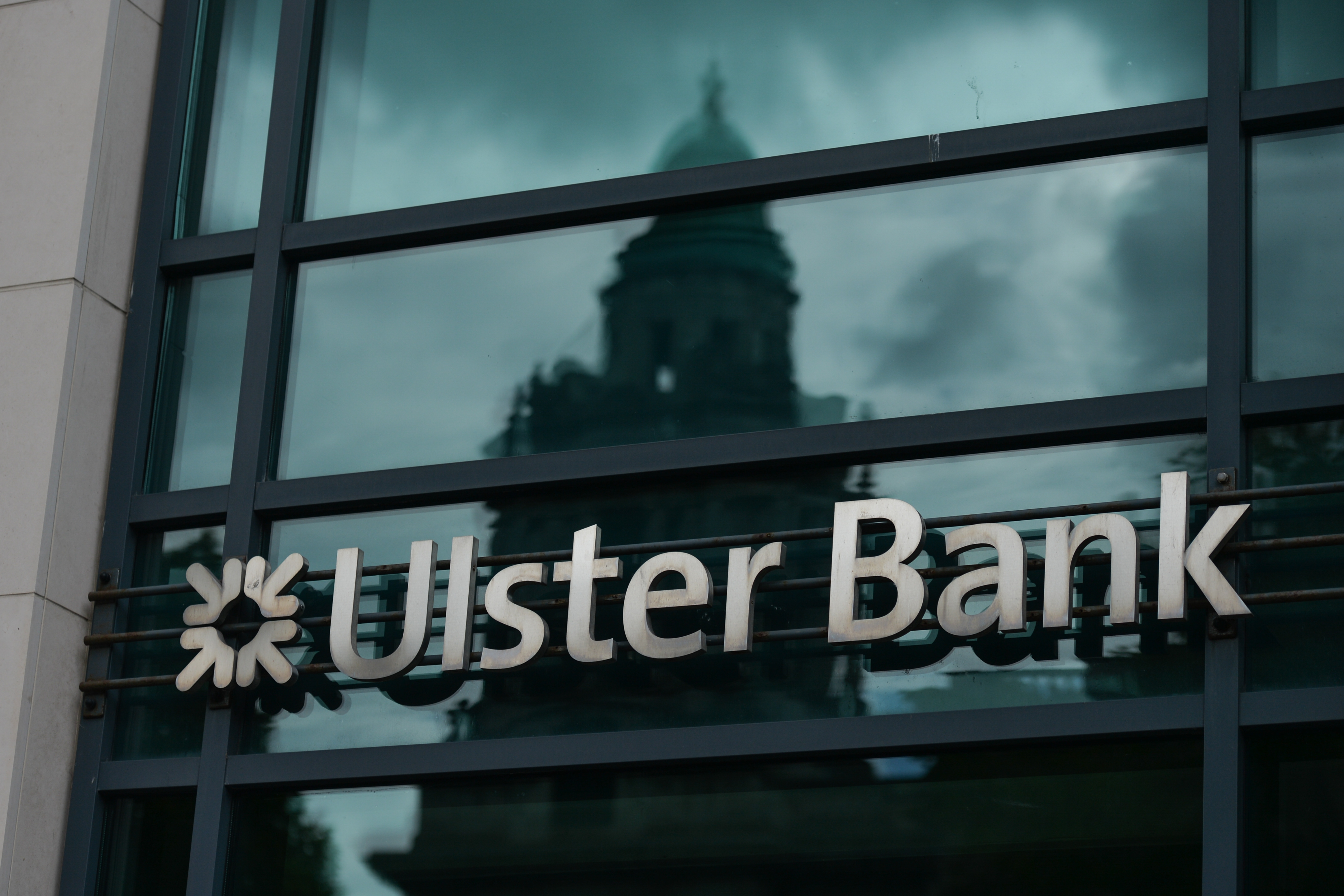How to keep your dividends safe from the taxman
The number of people expected to pay dividend tax in 2024/25 has doubled since 2021/22. We reveal six ways to keep your dividends safe and beat the tax trap


Almost 3.6 million people are expected to incur tax on dividend income this year - double the number compared to three years ago.
The number of taxpayers paying dividend tax has surged due to a series of cuts to the tax-free annual allowance, hitting investors and the self-employed.
The annual dividend allowance was cut from £2,000 to £1,000 in April 2023, and then halved again to £500 in April this year.
MoneyWeek
Subscribe to MoneyWeek today and get your first six magazine issues absolutely FREE

Sign up to Money Morning
Don't miss the latest investment and personal finances news, market analysis, plus money-saving tips with our free twice-daily newsletter
Don't miss the latest investment and personal finances news, market analysis, plus money-saving tips with our free twice-daily newsletter
According to a freedom of information request by the investment platform AJ Bell, HMRC expects to rake in £17.8 billion in dividend tax this tax year. This compares to £14.7 billion in 2021/24.
Three years ago, only 1.8 million people paid the tax, but almost 3.6 million are set to pay it this tax year.
A fifth of all higher-rate taxpayers now pay dividend tax, with an average bill of £5,379 each, while additional-rate taxpayers will see an average bill of £32,578.
Some basic-rate taxpayers who are only just breaching the allowance are also being dragged into paying the tax. They won't have a huge bill to pay, but could still be required to file a tax return.
“Cuts to the dividend allowance mean the number of people facing tax on their dividends is soaring," comments Laith Khalaf, head of investment analysis at AJ Bell.
“These aren’t simply fat cats or company bosses. Lots of small shareholders and basic-rate taxpayers are being drawn into the tax net too."
The freeze on income tax thresholds until 2028, as confirmed in the Autumn Budget, will no doubt drag some investors into paying higher rates of dividend tax in future. For example, someone who moves from the basic-rate tax band to the higher band will face a dividend tax rate almost four times higher.
But there are ways to avoid the tax, such as making the most of your ISA allowances, transferring assets to a partner, or using a pension.
We look at how dividend tax works, and reveal six tips to help you beat the dividend tax trap.
How does dividend tax work?
You do not pay tax on any dividend income that falls within your personal allowance (which is £12,570).
You also get a dividend allowance each year. This is worth £500 for 2024/25. You only pay tax on any dividend income above the dividend allowance.
The tax rate you pay depends on your income tax band:
- Basic rate - 8.75%
- Higher rate - 33.75%
- Additional rate - 39.35%
To work out your tax band, add your dividend income to your other income. You may pay tax at more than one rate.
If your dividends are within the dividend allowance for the tax year, you do not need to tell HMRC.
However, if you are paying tax on up to £10,000 of dividends, you do need to tell HMRC - but you don't need to fill in a tax return, unless you already submit one. Instead, you can call HMRC or ask them to change your tax code.
If you're paying tax on over £10,000 in dividends, you’ll need to fill in a self-assessment tax return. If you do not usually send a tax return, you need to register by 5 October following the tax year you had the income.
1. Use your stocks and shares ISA
Your first port of call for avoiding dividend tax should probably be a stocks and shares ISA.
Dividends paid on investments held in ISAs are free from income tax and don’t take up any of your £500 tax-free dividend allowance.
You can set up an ISA with up to £20,000 in cash and buy investments like funds and shares within it.
Myron Jobson, senior personal finance analyst at Interactive Investor, comments: “Shifting investments into an ISA protects future gains and dividends from the clutches of tax.”
Or you can carry out a Bed and ISA transfer, which moves existing investments into an ISA, by selling them and buying them back within an ISA wrapper, again up to a limit of £20,000 each tax year.
Doing a Bed and ISA could save you £15,000 in tax over a decade, according to research by Vanguard.
Khalaf notes: "This does crystallise any gains you’ve made on those investments though, which will count towards your capital gains tax allowance (currently £3,000) and could result in a capital gains tax charge if your profits exceed that amount."
Note that stocks and shares ISAs are set to become even more popular due to the capital gains tax (CGT) hike in last month's Budget. The lower rate of CGT for basic-rate taxpayers has gone up from 10% to 18% while the rate for higher earners has jumped from 20% to 24%.
This applies to the sale of shares and funds that are not held in an ISA or pension.
2. Protect with a pension
Pensions, such as self-invested personal pensions (SIPPs), are another way to protect your dividends from the taxman.
SIPPs qualify for the same upfront tax breaks as other pensions, but they come with more flexibility as you can usually pick and choose from a wide range of investments.
They are less flexible than ISAs because you can’t access your money until you hit age 55 (rising to 57 from 2028). However, dividends in a pension can accumulate in the pension without being subject to tax, and like in an ISA, they don’t take up any of your £500 dividend allowance.
Khalaf adds: "You can also do a ‘Bed and SIPP’ to shield existing investments from dividend tax by selling them and buying them back within the tax shelter. Again, this potentially raises a capital gains tax liability if your annual gains exceed £3,000."
3. Take advantage of your dividend allowance
While the dividend allowance has been cut drastically, you can still receive £500 in dividends each year without paying tax on them.
Working out how much you can keep outside a tax shelter without paying tax is not an exact science, seeing as you don’t know exactly what dividends a company will pay, and they also tend to increase over time.
According to Khalaf, the FTSE All Share usually yields somewhere in the region of 3.5%, so £500 of dividends from a UK tracker fund would equate to a capital holding of around £14,285 for an individual or £28,570 for a couple.
"Of course, that value and the dividends paid will fluctuate over time, probably trending upwards and requiring further action," he notes.
4. Transfer assets to your partner
You can reduce taxable income by transferring assets from one spouse or civil partner to another.
This can reduce tax liabilities where one partner isn’t using their dividend allowance, has some free ISA allowance to shelter the shares, or simply sits in a lower tax band and so will be subject to less tax on dividends above the allowance.
“Couples can effectively double gains and income they can make tax-free by using both their annual exempt amounts,” says Jobson. “Only married couples and civil partners can transfer assets tax-free, meaning those who aren’t could potentially trigger a tax liability.”
Khalaf explains that transferring investments to a partner can be particularly effective when one partner has large dividend payments that are pushing them up into a higher tax band.
He adds: "Transfers of investments between spouses or civil partners aren’t subject to capital gains tax, and can be done ‘in specie’. This means simply changing the ownership of the investments rather than selling them and handing over in cash, which would potentially raise a capital gains tax liability."
5. Don’t rely on accumulation units
Many funds offer accumulation units, which automatically reinvest dividends paid by companies in the portfolio without paying them out of the fund.
This might sound like a good way to avoid receiving dividends and therefore sidestep the dividend tax.
However, even though investors never see the dividends in their account, they are still taxable.
Khalaf explains that investors should receive an end-of-year tax certificate detailing all the dividends received by their investments, including accumulation units.
He warns: "Don’t get lured into thinking that just because you’ve bought accumulation units, you’ve avoided dividend tax."
6. Consider a VCT
Buying venture capital trusts (VCTs) at issue means any dividends you receive from the underlying investments are free from dividend tax.
However, bear in mind that VCTs invest in very early-stage companies and come with a high level of risk and limited liquidity.
"They are therefore better suited to experienced, adventurous investors who have already maxed out on ISAs, and perhaps pensions too," says Khalaf.
"On the plus side you also get 30% upfront tax relief, so for each £10,000 investment you can claim £3,000 back from the taxman, though you must hold the VCT for at least five years in order to keep the relief."
Get the latest financial news, insights and expert analysis from our award-winning MoneyWeek team, to help you understand what really matters when it comes to your finances.

Ruth is an award-winning financial journalist with more than 15 years' experience of working on national newspapers, websites and specialist magazines.
She is passionate about helping people feel more confident about their finances. She was previously editor of Times Money Mentor, and prior to that was deputy Money editor at The Sunday Times.
A multi-award winning journalist, Ruth started her career on a pensions magazine at the FT Group, and has also worked at Money Observer and Money Advice Service.
Outside of work, she is a mum to two young children, while also serving as a magistrate and an NHS volunteer.
-
 Goodwin: A superlative British manufacturer to buy now
Goodwin: A superlative British manufacturer to buy nowVeteran engineering group Goodwin has created a new profit engine. But following its tremendous run, can investors still afford the shares?
-
 Is US stock market exceptionalism over?
Is US stock market exceptionalism over?US stocks trailed the rest of the world in 2025. Is this a sign that a long-overdue shift is underway?
-
 Halifax: House price slump continues as prices slide for the sixth consecutive month
Halifax: House price slump continues as prices slide for the sixth consecutive monthUK house prices fell again in September as buyers returned, but the slowdown was not as fast as anticipated, latest Halifax data shows. Where are house prices falling the most?
-
 Rents hit a record high - but is the opportunity for buy-to-let investors still strong?
Rents hit a record high - but is the opportunity for buy-to-let investors still strong?UK rent prices have hit a record high with the average hitting over £1,200 a month says Rightmove. Are there still opportunities in buy-to-let?
-
 Act now to bag NatWest-owned Ulster Bank's 5.2% easy access savings account
Act now to bag NatWest-owned Ulster Bank's 5.2% easy access savings accountUlster Bank is offering savers the chance to earn 5.2% on their cash savings, but you need to act fast as easy access rates are falling. We have all the details
-
 Pension savers turn to gold investments
Pension savers turn to gold investmentsInvestors are racing to buy gold to protect their pensions from a stock market correction and high inflation, experts say
-
 Moneybox raises market-leading cash ISA to 5%
Moneybox raises market-leading cash ISA to 5%Savings and investing app MoneyBox has boosted the rate on its cash ISA again, hiking it from 4.75% to 5% making it one of top rates. We have all the details.
-
 October NS&I Premium Bonds winners - check now to see what you won
October NS&I Premium Bonds winners - check now to see what you wonNS&I Premium Bonds holders can check now to see if they have won a prize this month. We explain how to check your premium bonds
-
 The best packaged bank accounts
The best packaged bank accountsAdvice Packaged bank accounts can offer great value with useful additional perks – but get it wrong and you could be out of pocket
-
 Where to find the best returns from student accommodation
Where to find the best returns from student accommodationStudent accommodation can be a lucrative investment if you know where to look.